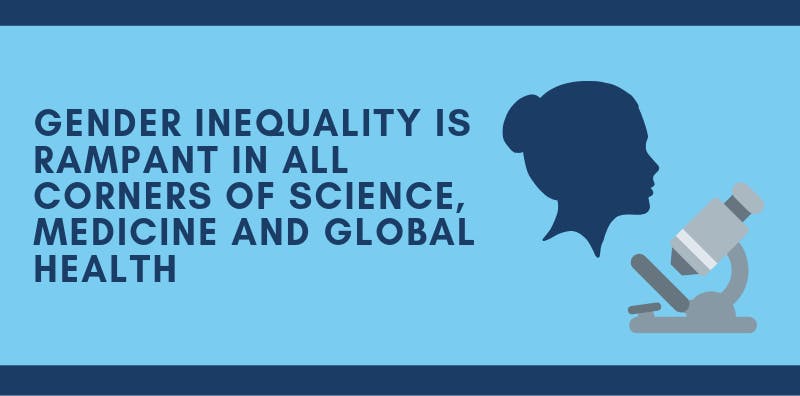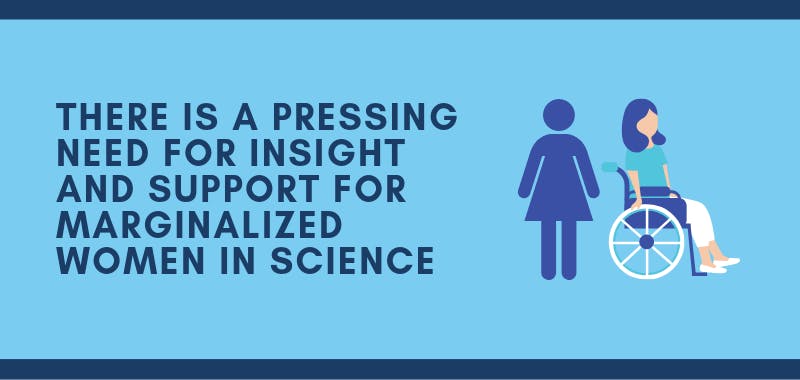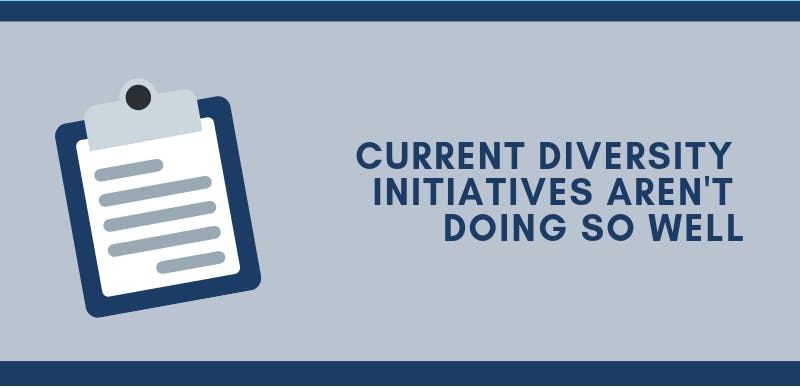Monday, February 11 was the International Day of Girls & Women in Science. It was first celebrated in 2016 in an effort to recognize that girls and women play a critical role in scientific fields. Yet despite the surge in initiatives to address gender inequality and boost the visibility of women in science, there is still much to be done to address the disadvantages, discrimination, and sexism that women in science face today, according to a recent report from The Lancet journal.
Last Friday, The Lancet, one of the oldest and most prestigious medical journals in the world, published its landmark #LancetWomen report. It dedicated an entire issue to providing peer-reviewed evidence for the institutional and systemic barriers impacting women’s experience and advancement in science, medicine, and global health.
According to Jocalyn Clark, The Lancet’s executive editor and an assistant professor at the University of Toronto, the journal received over 300 submissions from more than 40 countries. Topics in the issue range from recognizing implicit bias, to best practices to address gender inequality, to the missing trans women of science. Overall, the issue demonstrates that gender inequality continues to exist in the scientific fields (especially for women belonging to marginalized groups), that current diversity initiatives are not doing so well, and offers approaches on how to tackle this imbalance.
Clark notes that The Lancet will continue to “campaign for change” — both to address gender inequality within its own journal, and more broadly within larger academic systems, such as grant funding.
The 118-page issue leaves a lot to unpack and digest. For a more detailed breakdown of the special report’s major takeaways, read on.
From the very first page in the #LancetWomen issue, it’s clear that while the proportion of women researchers is increasing, women remain under-represented in science. In fact, one study led by researchers at University College London found that women constitute less than 30 percent of scientists globally, and that this number can vary widely in different regions. For example, women make up 45 percent of researchers in Latin America, but only 19 percent in south and west Asia. Even in the fields of health and medicine, which feature a greater number of women than men, there are still gender imbalances. For example, women hold few leadership positions in the health workforce and are still a minority in surgical specialties.
But beyond under-representation, you may be wondering: How do women fare when it comes to applying for grants? Using data from over 23,000 Canadian federal grant applications and accounting for confounding factors, a team of Canadian researchers found that gender bias disadvantages women when applying for grant funding — and that the predicted probability of success is 0·9 percent lower for female applicants. This bias is magnified to 4.0 percent when granting schemes evaluate the applicant and not the quality of their proposed research. As the study notes, bias in grant review prevents the best research from being funded.
Women don’t fare much better in the academic publishing system as they remain under-represented in author, editorial, and reviewer positions across disciplines. Interestingly, an internal audit at The Lancet revealed that while women dominate the journal’s workforce, men make up an overwhelming majority of author and reviewer positions in published papers.

Farah Qaiser
While there are a number of advocacy campaigns (such as #WomenInSTEM) today, many of these initiatives fail to acknowledge individuals belonging to marginalized groups, which include trans women, women of color, and women belonging to low- and middle-income countries. Multiple authors point this gap out in the #LancetWomen issue, highlighting the pressing need for statistics and insights about marginalized women’s experiences in science in order to develop initiatives to properly support these groups.
In particular, a team of researchers from the Oxford University Clinical Research Unit, in Ho Chi Minh City, Vietnam, report an analysis of gender issues within their institution. Here, gender imbalances included a lower success rate for grant applications and fewer publications where women are the senior authors. What’s interesting is that the authors point out that different societal norms, such as women scientists living in extended families and thus having a greater domestic burden, can take time away from research progress and thus negatively impact career-related opportunities, including presenting at conferences or attending networking events.

Farah Qaiser
Fortunately, not all of the findings in the #LancetWomen issue are disheartening — the issue also points to the potential health, social, and economic gains that can be made by addressing gender equality in science, medicine and global health.
In particular, a team of North American researchers showed that diverse science teams do “better” (i.e. more rigorous and effective) science, especially when it comes to reporting sex-based differences in subjects. Here, the authors examined papers published between 1980-2016 in the fields of biomedical research, clinical medicine, and public health to determine whether there was a relationship between the author’s gender and whether their study reported sex-based differences. While the authors note that sex-related reporting is increasing in publications (especially clinical specialties), it is the papers with female first and last authors that are more likely to report sex-based differences in subjects. This is particularly important when it comes to translating findings from pre-clinical to applied health settings and also allows for robust replication in science.

Farah Qaiser
Despite the many diversity policies and action plans that have been proposed, the top 15 global universities for social sciences and public health in the United Kingdom, United States, and Canada still have a number of gender and ethnic disparities. Specifically, an international team of researchers found that despite women outnumbering men at junior levels, the representation of women declines as you go up each level of the academic hierarchy - and is magnified for ethnic-minority women.
Broader initiatives, like the Athena Scientific Women’s Academic Network (SWAN) and the National Science Foundation’s ADVANCE, have helped raise awareness and push for change in the U.K. and U.S. respectively. But before you can pat yourself on the back, a second international study notes that it’s difficult to attribute any tangible progress made in addressing gender inequality directly to Athena SWAN and ADVANCE as they often overlap with institutional pushes for inclusivity. In fact, few men have been involved in Athena SWAN and ADVANCE, and instead, women are more likely to to take on the demanding administrative and leadership roles. While such roles have resulted in some positive effects for the women involved (e.g. improving visibility of their profile within their institution), there are also negative impacts to consider, such as the large time commitment needed which may slow down research progress. As the study notes, for gender inequality to be addressed in a systemic but sustainable manner, men in science must also be involved.
Fortunately, a trio of researchers present a thorough review of organizational best practices to address equity, diversity and inclusion in science and medicine. This includes changing the culture and climate within an organization by normalizing diversity, establishing inclusive leadership to drive change, and taking advantage of legislative approaches (such as quotas) to achieve gender equality. In particular, the authors emphasize the need for allyship training as a tool to effectively support and advocate for all members in the scientific community.
So...what next?
While the #LancetWomen issue delivers a shocking set of evidence, this (unfortunately) isn’t new news.
In late 2018, Kathleen E. Grogan, a researcher at the Pennsylvania State University, wrote a widely read commentary for Nature Ecology and Evolution, where she summarized evidence overwhelmingly showing the structural barriers to women in science. Grogan received numerous positive responses in-person, on social media, and even prompted a departmental discussion at the French Laboratoire d’Ecologie Systématique et Evolution. With The Lancet issue, Grogan says that we now have the peer-reviewed data on large sample sizes to validate the anecdotal experiences and feelings that individuals belonging to under-represented groups have always felt.
“I think anyone in those [under-represented] groups who has been in science long enough has experienced those barriers,” she said. “We know they are there. But without the data, it’s hard to convince the majority to listen to the minority. So I’m hopeful that with these data, we can create real change.” Grogan also points out that the cultural and institutional change needed to address these barriers requires intentional and active work.
“My hope with this growing body of data is that it will be easier to convince ‘non-believers’ or people on the sidelines to join into the active effort,” she said.
In reference to active effort in addressing gender inequality, the global organization 500 Women Scientists comes to mind. The group has over 100 pods across the world, and are leading projects such as Request A Scientist (which provides a directory of over 8,000 women experts to utilize as sources and speakers) and Wikipedia Edit-A-Thons (to promote visibility of the achievements of scientists belonging to under-represented groups and address Wikipedia’s gender and racial biases).
Maryam Zaringhalam, who is on the 500 Women Scientists’ leadership board, says that this issue’s findings “confirm our suspicions” and mean that the scientific community can do something to address the inequality. In particular, Zaringhalam emphasizes how important visibility is. She says that too often women scientists are “celebrated for being women, and not [for] the achievements they’ve made.” With Wikipedia Edit-A-Thons, the achievements made by women in science, medicine, and global health are available for all to see.
It should be noted that pushing for change isn’t the responsibility of individuals from marginalized groups, but must be spearheaded by institutions and leaders too. The Lancet is leading by example, making a commitment to advocate for equity, diversity, and inclusion both within its journal and in the broader scientific community. The publication’s goals include reaching gender parity across all The Lancet journals by the end of 2019.
It’s easy to feel overwhelmed in the face of such extensive gender bias. Personally, I’m turning to a powerful entry in the #LancetWomen issue — a personal commentary from Amsterdam University Medical Center’s Marceline and Mpho Tutu van Furth — for hope with the idea of #IToo. Yes, there are systemic barriers to dismantle and the onus is not on marginalized individuals to address it alone, but #IToo am willing to support my fellow women and individuals belonging to marginalized groups in their advancement in the fields of science, medicine, and global health.




Shares